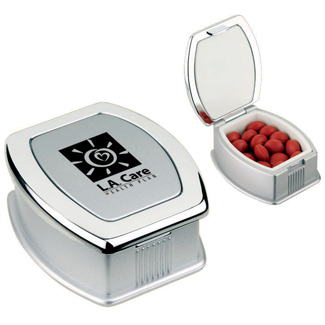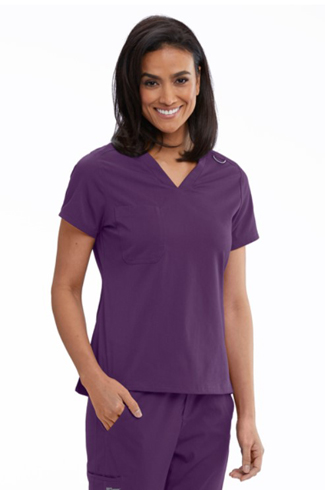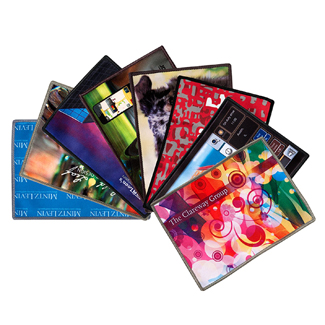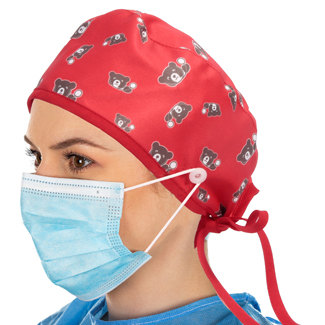A Prescription For Promotional Products

Medical professionals help us heal and give us hope. They go into medicine for many different reasons. A survey from St. George’s University shows that some of the top reasons include saving lives in unexpected emergencies, helping patients take control of their health and being able to contribute to a vital field.
The health care industry is one of the nation’s largest employers, with 1 in 8 Americans currently working in health care, according to Zippia. This number is only projected to grow due to an aging population that needs various health care services. The Bureau of Labor Statistics projects jobs in the health care field to increase 16% from 2020-2030, which is much faster than the average for other occupations.
When it comes to medical doctors, the United States is home to more than 1 million licensed physicians who work at over 7,300 hospitals, including children’s hospitals, VA hospitals and rehabilitation hospitals. Today’s MD workforce is 20% larger than it was in 2012, according to data from the Federation of State Medical Boards.
Wherever they work and whatever population they serve, these health care professionals know how to treat their patients. But what about marketing their practices or recruiting staff members? That’s where promotional products come in.
Logoed merchandise can be used in all kinds of ways in the health care market, from highlighting a facility’s services to attracting new patients to showing gratitude to staff. Here we provide an overview of what the health care industry looks like today and share some promotional ideas for medical practices, hospital systems, pharmacies and individual practitioners.
Market Snapshot
The pandemic has taken a toll on everyone – especially health care professionals. Caring for others during the ups and downs of the pandemic has led to an unparalleled level of stress for many of those on the front lines.
A National Academy of Medicine study found that between 35-54% of clinicians report at least one symptom of burnout, which is more than double the amount of burnout found in other fields. Almost all medical professionals (93%) report experiencing stress, while 86% experience anxiety, 77% feel frustrated and 75% say they are simply overwhelmed. As a result, some health care professionals are quitting. A third of nurses say they plan to leave their roles by the end of this year, according to a survey from Incredible Health. Their biggest reasons for resigning? Burnout and a desire to leave a high-stress environment.
In the months ahead, hospitals, clinics, outpatient centers and other medical offices can work to support health care workers’ well-being. Promotional campaigns can encourage professionals to seek help when needed and remind staff of the importance of taking care of themselves.
In-Demand Doctors
Some estimates show that the United States could be facing a physician shortage of 120,000 doctors by 2030. These areas are projected to have the greatest need:
- Family medicine
- Obstetrics, gynecology and women’s health
- Cardiology
- Psychiatry
- Gastroenterology
- Internal medicine
- Neurology
- Pulmonary medicine/critical care
- Orthopedic surgery
- Dermatology
Sources: HealtheCareers.com and FierceHealthcare.com
Best States For Health Care
In a U.S. News & World Report evaluation of the best states for health care, these 10 states rose to the top. The results were based on three benchmarks: access to care, quality of care and the state population’s overall health.
- Hawaii
- Massachusetts
- Connecticut
- New Jersey
- California
- Maryland
- New York
- Washington
- Rhode Island
- Colorado
Providing Patient-Focused Info
Through promotional campaigns, doctors’ offices and medical practices can keep patients informed. Here’s what patients want to hear more about:
- General health and wellness tips: 42%
- Scheduling options for preventive screening: 41%
- Appointment availability: 39%
- Vaccine updates: 37%
- Chronic disease management: 37%
- Updates about COVID-19: 34%
Source: SymphonyRM
Let’s Talk Telehealth
Many patients no longer want to see their doctor in person. In fact, 40% say they will continue to use telehealth after the pandemic over, according to McKinsey. This is due to the convenience of virtual visits and a better overall experience than going to the doctor’s office. Physicians can use promotional products to promote their telehealth services and educate patients about how to take advantage of various offerings.
Job-Changing Physicians
Regular citizens aren’t the only ones updating their resumes and switching jobs these days. Nearly half of physicians (43%) changed jobs amid the pandemic. About 8% retired and 3% left medicine altogether to pursue something different. Why the turnover? According to a CHG Healthcare survey of more than 500 physicians, the primary motivators include:
- Better work/life balance: 35%
- More money: 12%
- Increased flexibility: 11%
- A more desirable location: 8%
- Better workplace culture: 7%
- More growth opportunities: 5%
- More support from administration: 4%
High Trust In Health Care Professionals
The public continues to hold nurses and doctors in the highest esteem when it comes to honesty and ethics. Among more than 20 different occupations, these medical professionals hold the top two spots, with 81% of Americans viewing nurses as having high or very high ethical standards and 67% of Americans saying the same about medical doctors. Pharmacists also rank in the top five, with 63% of Americans viewing them as being honest and ethical.
Source: Gallup’s annual Honesty and Ethics survey
Health Care Spending Skyrockets
U.S. health care spending topped $4.3 trillion in 2021 and is projected to grow 4.9% annually from 2022-2024. By 2030, spending could hit $6.8 trillion.
Source: Centers for Medicare and Medicaid Services
The History Of The White Coat
A white coat – or lab coat – has been the traditional attire for medical professionals since the 1800s. Doctors initially wore them to be easily recognized by patients and colleagues, and to distinguish themselves from phony physicians who tried to sell miracle cures. Doctors today still wear white coats as a symbol of professionalism, integrity and their commitment to caring for the sick and suffering. Nearly all medical schools (99%) accredited by the Association of American Medical Colleges hold white-coat ceremonies as a rite of passage for graduates.
Source: Intiva Health
What’s Up, Doc?
During the pandemic, nearly half of patients (49%) in a survey from SymphonyRM say they didn’t receive the critical information they needed regarding COVID-19. This lack of communication is the top reason patients lost confidence in their doctor. Nearly 1 in 5 patients is now considering changing providers based on how their doc handled COVID-19.
What Patients Want In A Doctor
When medical professionals understand what patients value most in a doctor, they can fine-tune their marketing to show how they stand apart from other professionals. Here are some of the top qualities that patients seek in their doctor:
- Ability to listen: 61%
- Clinical experience: 48%
- Compassion and empathy: 45%
- Accessibility: 23%
- Respect for gender, race and ethnicity: 23%
Source: Everyday Health – Castle Connolly Physician Consumer Survey
The Best (And Worst) Places To Practice Medicine
To determine the best states for doctors, WalletHub looked at 19 different metrics, including physicians’ starting salary, annual wage, insured population rate and the quality of the public hospital system.
Based on this data, these five states rank at the top for practicing medicine:
- South Dakota
- Minnesota
- Wisconsin
- Montana
- Idaho
These locations have the least favorable conditions for physicians:
- Rhode Island
- New York
- District of Columbia
- Delaware
- New Jersey

Brands can keep a logo or message visible every day with the Salute Square-Styled Pill Box. A two-tone design sets this pill box apart from others.
Logomark / PPAI 110898, S11 / www.logomark.com

An essential in families’ medicine cabinets and first-aid kits, the Digital Thermometer makes a helpful gift from doctors’ offices. It includes an automatic shut-off feature and a digital LCD display. Add a logo on the two-piece protective travel case.
PCNA / PPAI 113089, S15 / www.pcna.com

Give physicians, nurses and other health-care workers some style with the Barco Grey’s Anatomy Bree Tuck-In Stretch Top. It features a modern fit with a high-low hem, a V-neck and a light-grey badge loop. Choose from nearly a dozen colors, including eggplant (shown), ciel blue and rose splash.
Scrub Authority / PPAI 387935, S6 / www.scrubauthority.com

The Pediatric Medi-Spoon makes the medicine go down a bit easier. An ideal giveaway from pediatricians and urgent-care clinics, this stand-up spoon holds up to 2 teaspoons and is made from medical-grade plastic.
Evans Manufacturing / PPAI 110747, S10 / www.evans-mfg.com

The fully customizable Smart Cloth Microfiber Cleaning Cloth makes a great marketing tool for optometrists and ophthalmologists. This washable cloth features a protective coating that prevents the buildup of mold, mildew and odors.
IMAGEN Brands / PPAI 114197, S10 / www.imagenbrands.com

Add a step-and-repeat logo on the Full-Color Surgical Cap or choose from a design like teddy bears, flowers or nautical stripes. Medical professionals will appreciate a tie that keeps it snug in the back and a button that prevents elastic abrasion behind the ears.
Landes / PPAI 221733, S5 / www.landesusa.com

